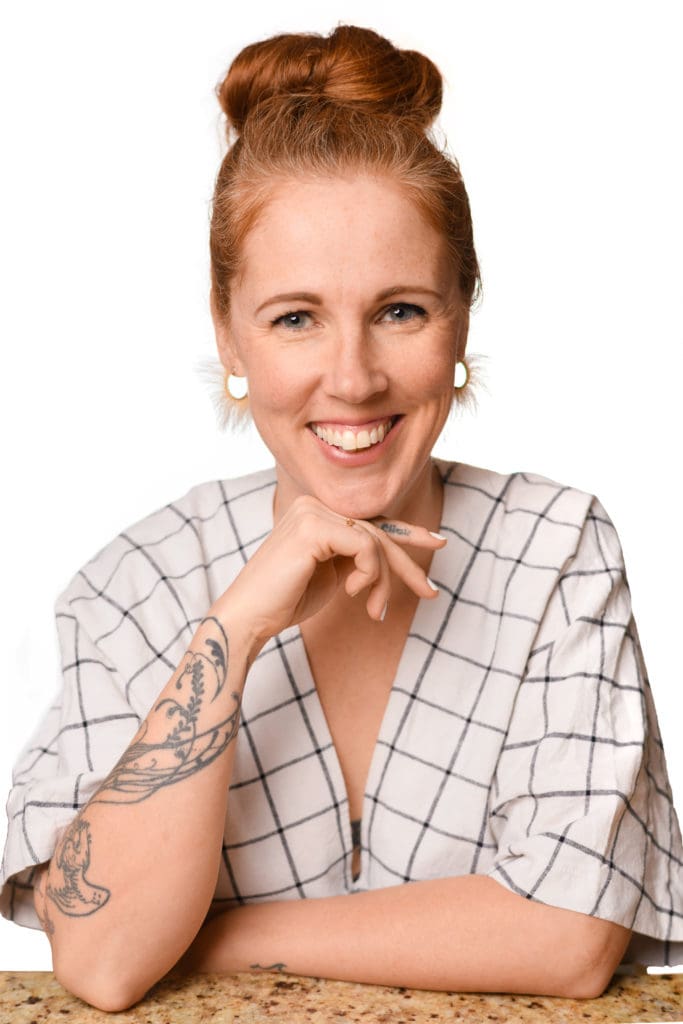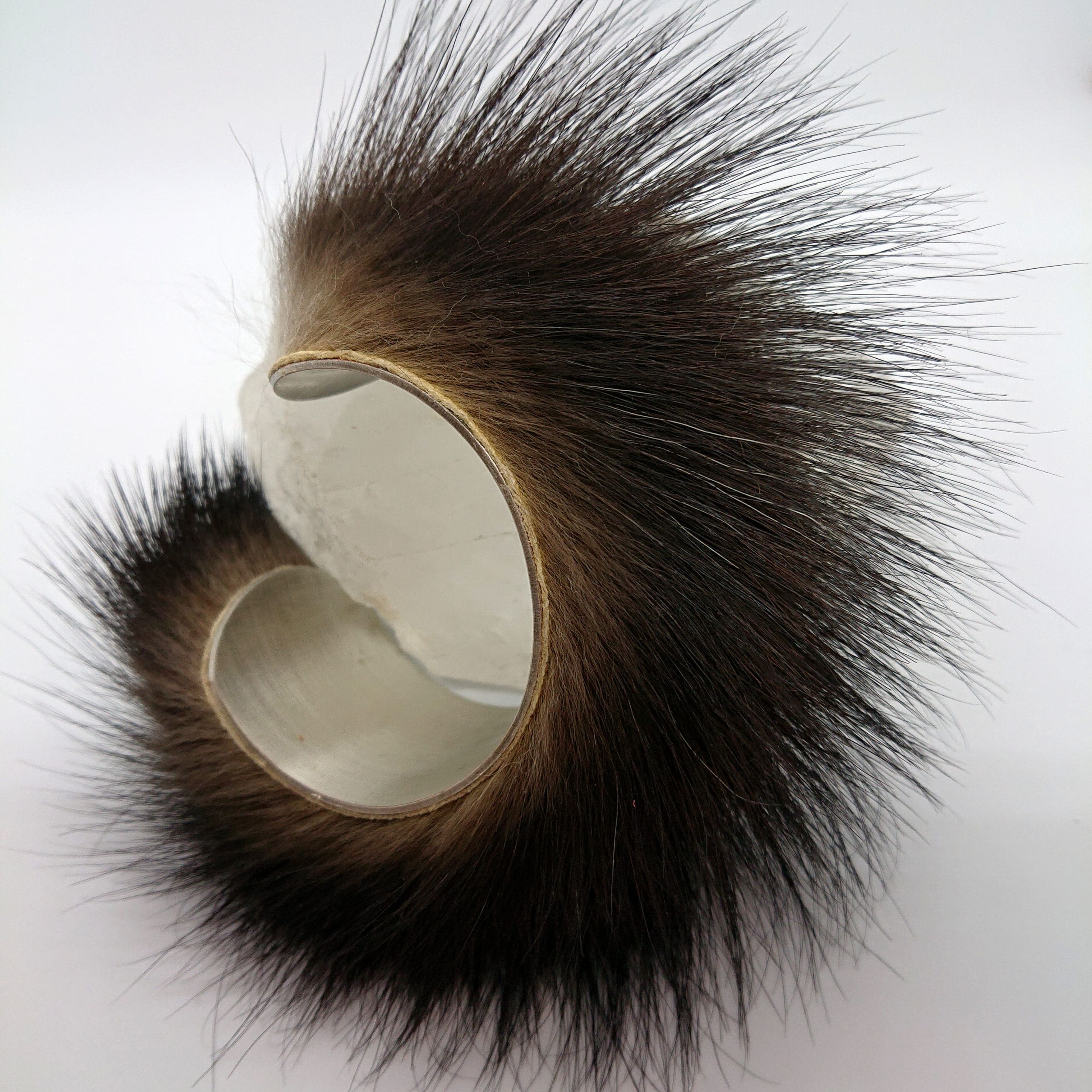Wild Yukon Furs is an Indigenous-owned business providing finished goods handcrafted from Indigenous-sourced furs from around the territory. We chatted with creator Vanessa Ægirsdóttir to learn more about her craft! —Noa Nichol

Where do you take inspiration for your designs from?
My inspiration always comes from the materials. When I’m working with furs, their individual characteristics are so unique and special (sometimes even frustrating or challenging), it’s my job to allow them to be appreciated for their wildly varying beauty as best I can. Also, living in the Yukon inspires me. The skies are ever changing, the light is unlike anything I’ve seen anywhere and it regularly stops me in my tracks. Light and texture. Who wouldn’t be inspired?
Who do you design for?
I design for those who provide my furs and for those who purchase them. The First Nations communities who provide my furs are one of the most critical partners in my creative process and I couldn’t do what I do without them. If I can honour First Nations trappers, their cultures, and these exceptional furs then everything else is extra. The folks who wear the furs, their advocacy and commitment to sharing our stories is who the finished goods are made for. I am so appreciative of my supply partners and for my loyal customers who we call “collectors” because you really can’t buy just one pair of earrings.
How would you describe the pieces that you design?
I try to design pieces that are classic and not subject to the fickleness of trends. I reject the expectation of seasonal collections for a few reasons. First, the waste produced in the conventional fashion calendar goes against one of our core values; eliminating waste. Second, it can lead to collections that lack purpose or clarity. My collections rarely change because each piece of fur from each pelt is so different which results in every single item being inherently one-of-a-kind by default. My relationship to the primary material (fur) allows for the excitement of creating unique works every time I produce a pair of earrings or necklace.
Do they hold a deeper meaning beyond simply being decor pieces or ornaments to wear?
What a fabulous question. Yes, there is a deeper meaning. Because these pieces are made with Indigenous-sourced wild furs, there are cultural factors that impact the harvest and creation of everything. There is ceremony, tradition, and so much gratitude and humility in the harvest of the furs which has a lasting effect on the finished goods. Because of my close ties to the harvest (my husband who is Tlingit is my primary fur supplier and I’m his trapping assistant) and cultural teachings that have been shared with me by my husband and his elders, I can share some of that with my customers. I can share knowledge about how the fur is harvested in a good way and that respect of the fur impacts how the wearer feels when they adorn themselves with the fur. My husband says that when you wear fur, you’re forever in relationship with that animal so this respectful harvest is essential to protecting our customers and giving them goods that are accompanied by good energy.
How do you source the furs for your pieces?
I know that how we source our furs is one of the most meaningful parts of this business. I use exclusively Indigenous-sourced furs which is a way I can enact reconciliation in a meaningful way in my community. I pay the highest price I can for each fur (I do not haggle or negotiate lower prices and often have to convince trappers to take MORE money than they’re asking). For many trappers, it is very costly to operate a trap line. One of the trappers I work with was losing between $8-12K every year in non-recoverable expenses just to keep their trapline in operation but now, selling furs to us, their trapline is profitable. At the beginning of each trapping season, I look at the year’s best fur prices from the auction houses and try to match those prices. This allows the trappers we work with to make informed decisions about which furs to target and how many to harvest.
What misconceptions around fur/trapping would you love to clear up?
Trappers don’t love killing animals. The Indigenous trappers I know and work with love animals and the land. Because of the cultural elements of their fur harvesting practice, their understanding that the animals give themselves as a gift to us shifts our relationship to the life that is given so that we can wear the fur. If we, the wearer of the fur keeps it in mind that an animal gave its life for us, then we can honour it and celebrate it by wearing that fur. By educating oneself on the traditions and culture that is inherent in the harvest can truly shift any misunderstanding about the use of fur. Also, I’d like to note that the fur harvest in Canada is highly regulated. We use ONLY quick-kill traps which minimizes stress on the animals and ensures a swift death. In addition to that, as I’ve mentioned, the cultural standards go above and beyond the government standards so customers can be confident that not only are government regulations being followed, cultural protocols are also being observed, ensuring an ethical, sustainable harvest that is both part of responsible population management and ensures healthy numbers of fur bearers for future generations.
How do you use your platform to create art that touches on Indigenous issues and healing?
I’m not indigenous but my husband is (Tlingit) and every time I buy his fur, that of his fellow Indigenous trappers, share a story, dispel a myth, or open a mind (even just a little bit), a bridge is being built. As a white Canadian, this is my opportunity to model reconciliation in a real, sustainable way. I listen, I learn, I go on the land, I roll up my sleeves, and share stories of my experiences. I teach other non-Indigenous folks about the importance of the fur harvest for Indigenous folks as I understand it, based on what’s been shared with me and from what I’ve observed when participating in the harvest. I take great care to respect the fact that the Indigenous folks I work with are the only ones qualified to tell their stories so I don’t cross that line but I do share what I have permission to. I speak about my lived experiences, insights, and understanding. I am committed to a daily practice of decolonizing my thinking and behaviour and my husband is a spectacular support in doing that. As our company grows, I hope to buy all of the fur being produced by Yukon Indigenous fur harvesters so that they can protect their trapping knowledge, be on the land, and engage in the fur harvest which this country was literally built upon. Growth of that scale will allow us to continue doing what we do and reach a larger audience with the beauty and history of these gorgeous furs.
What message would you give to other up and coming or aspiring Canadian designers?
I would give four pieces of advice/wisdom:
- 1. You are probably not your target customer so make sure you are super clear on who that is (their values are a key thing to know) and market accordingly.
- 2. Don’t make your decisions from a place of fear. The best time to start is right now.
- 3. Stay focused. Don’t get distracted by what you *think* others might say about you. It’s none of your business (and they’re not thinking about you anyway).
- 4. You deserve to be here. Only you can do what you do exactly the way you do it. Go forth and bring your awesomeness to the world. We need it!

Be the first to comment